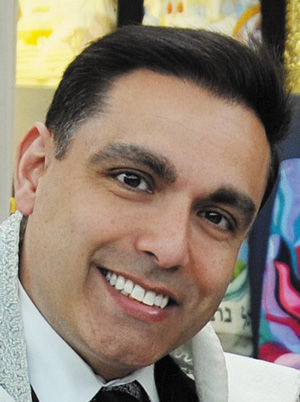The mitzvot of Purim
Published February 22, 2017
Most of us know Purim as the quintessential festival of unbridled joy and a time for exuberant merrymaking. However, in the midst of all the revelry, Purim also offers us an opportunity to participate in four special rabbinically ordained mitzvot, which can help enhance and elevate our lives and enable us to fulfill our mandate to be an Or Goyim — a “Light Unto the Nations”:
• Reading (hearing) the Megillah, The Scroll of Esther.
• Matanot LeEvyonim; providing gifts to the needy and impoverished.
• Mishloach Manot; offering gifts of food to friends and neighbors.
• Seudat Purim, the special Purim meal.
Notice that all of these special mitzvot are communal in nature. In order to fully perform them, one must engage with others.
Megillat Esther is chanted in a communal setting, ideally with a minyan. Donating money to those in need as well as gifts to friends and neighbors, by definition, demands direct involvement with others.
And the Purim Feast is supposed to be a shared experience. In fact, Rabbi Yisrael Meir Kagan, better known as the Chafetz Chayim (Poland, 1838–1933), in his halachic work known as the Mishnah Berurah, quotes Rabbi Yishayahu Horowitz, the author of the Shnai Luchot HaBerit (Prague, 1565-1630), as suggesting that: “Praiseworthy is one who gathers all the members of his household and all his friends (for the Purim Feast), because it is impossible to rejoice properly alone!”
Why is this the case? Why do all of the special mitzvot of Purim involve others?
The answer is both simple and profound — and surely germane to our current time and predicament. In the Megillah, the evil mastermind Haman suggests that, “There is one people spread out and scattered amongst the nations” (Megillat Esther 3:8).
What did Haman mean to suggest by using both the term “spread out” as well as the word “scattered”? Aren’t they one and the same?
Haman was positing that not only were the Jews physically spread out, they were also emotionally, intellectually, and even spiritually separated from one another. This lack of unity and absence of a sense of Achdut, oneness and solidarity, made them weak and susceptible to the whims of the maniacal Haman and his glutinous overlord, King Achashverosh.
It is for this reason that the wise Queen Esther, the true heroin of Purim, told Mordechai that she would only risk her life and plead on behalf of her people after Mordechai had charged the Jewish People to come together in a rare display of unity and commonality of purpose…“Go gather all the Jews, and fast on my behalf… “(Megillat Esther 4:16).
Purim, maybe more so than any other Jewish holiday, offers us the opportunity to focus in on relationships with other Jews and see how we can strengthen these associations for the betterment of the entire House of Israel. And once united, the Jewish People can be an ever more effective and powerful force for healing, goodness and blessing to the entire Human Family.
As we prepare for Purim 5777, I hope you will join me in working towards gathering all the “spread out” and scattered” members of our community so that we can all enjoy the blessings of a joyous Purim — one filled with meaning and purpose.















